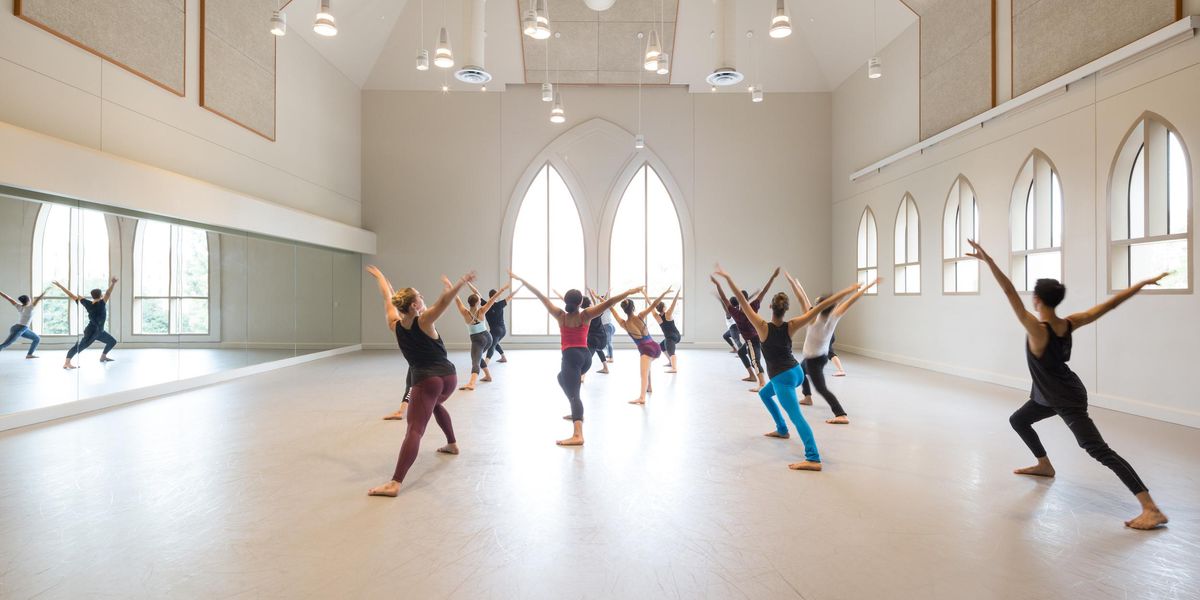2012 Auditions Guide: On the Spot
How to approach the improvisation section of auditions
Dominic Walsh (seated) rehearses his company. His take on improvising during auditions: “Directors are looking for an inner dialogue. Don’t try to perform and don’t try to be impressive.“ Photo by Gabriella Nissen Photography, Courtesy DWDT.
The assignment sounds easy enough: For 60 seconds, all you have to do is “show what you’ve got.” Anything goes. It’s just a quick minute of improvisation. Nothing you do, technically, can be “wrong.”
Yet the infinite possibilities can feel paralyzing. You may have spent hours in classes following cues to initiate movement from your lowermost left rib, to pretend like you’re painting the air, to dance like a cucumber. But in an audition, nerves don’t always permit the kind of creativity needed to come up with interesting movement on the spot. You’re exposed, and vulnerable, and in front of people who are deciding whether to hire you. Not exactly an ideal setting for artistic inspiration.
This ordeal is no longer reserved for the downtown modern dance world. Broadway productions and even contemporary-leaning ballet companies now use improv as an audition tool—whether or not the dancers will actually need to improvise once they get the job. Hubbard Street Dance Chicago artistic director Glenn Edgerton explains that it’s about more than testing improvisational skills: “You immediately see dancers’ individual movement qualities—what comes out of them is them.” When dancers don’t have someone else’s steps to reproduce, they reveal their own organic (or habitual) movement patterns: how they attack movement, how they go off balance and recover, how they phrase transitions, and the speed and size in which they like to move.
If you’ve never improvised before, an audition setting is not the best environment to try it out. To be prepared, seek out improv jams, try contact improv, take classes in Gaga or William Forsythe’s improvisation technique. You can even book time in an empty studio just to let yourself play while no one is watching. Find where your comfort zone ends and the nerves kick in—and how to push past that threshold.
“Directors are looking for an inner dialogue,” says Dominic Walsh, artistic director of Dominic Walsh Dance Theater in Houston. “Are dancers thinking about the craft, trying to find something personal, something interesting and new? For me, don’t try to perform and don’t try to be impressive. I want to see you find the pleasure of the physicality, of the shapes, of all your different bones.”
Every audition has different expectations. Improv can be a time to make creative movement choices, or an invitation to show off your switch splits and quadruple pirouettes. “At my audition for Spider-Man, people started pulling out all their backflips; at MOMIX, everyone did a headstand,” says Penelope Armstead-Williams, who’s danced with Philadanco and the touring production of Wicked. “You want to show you know what they’re looking for—while also dancing like you dance, doing what you’re best at.” Do some YouTube research on a company before the audition, so you can think about what aspects of your style to highlight—and what to keep in check. “When someone starts doing all their tricks,” says Edgerton, “I know they don’t really understand what Hubbard Street’s about.”
But how do you get past the feeling of being completely naked out there? Walsh suggests shutting your eyes. “I swear, it’ll automatically improve your improvisation by 20 percent,” he says. The strategy forces you to become more introspective, and to explore the sensations within the movement. If you feel too silly (or too crowded) to keep your eyes closed, just try it for a few moments at a time to bring your focus inward. Or at least put on mental blinders. “Watching other people will just confuse you and make you nervous that you should be doing what they’re doing,” says Ally Sacks, who recently danced in the Radio City Christmas Spectacular. “The mirror’s even worse: You get self-conscious and shut down.”
Kind directors will help dancers out by giving a specific task to focus on, such as “write your name with your body,” or “personify the smell of freshly cut grass.” Yes, the parameters sometimes sound ridiculous. But they’re actually a gift; the fewer choices you have, the safer you’ll feel. If you don’t have enough to go on, make up your own games: Focus on just one body part, play with tempos, or experiment with everyday gestures.
If you still feel out of your element when you step into the audition studio, fake it. No matter whether they want tricks or ingenuity, every director will be watching your confidence level. How game are you to jump into the snake pit? “Show some gumption,” Edgerton says. “Dancers need to be willing to approach challenges they’re not comfortable with.” He watches to see who has courage even when they have no clue what to do.
When Armstead-Williams auditioned for Bill T. Jones’ Super Fly, she was asked to improvise in tap—not her forte; she had only a few classes under her belt. “I could have said ‘I’m screwed’ and left,” she says. “Instead, I looked him right in the face and just started stomping. I got cast and the first day of the workshop, they said, ‘So, Penelope, you’ll do this part because you can tap.’ I was like, ‘Whoa, you thought I could tap?!’ Sometimes you have to throw caution to the wind. They’re giving you time to do your thing—take it without apology.”
Jennifer Stahl is Pointe’s senior editor.
Inset: Hubbard Street director Glenn Edgerton teaching a summer workshop. His audition improv advice: “Show some gumption.” Photo by Todd Rosenberg, Courtesy HSDC.





